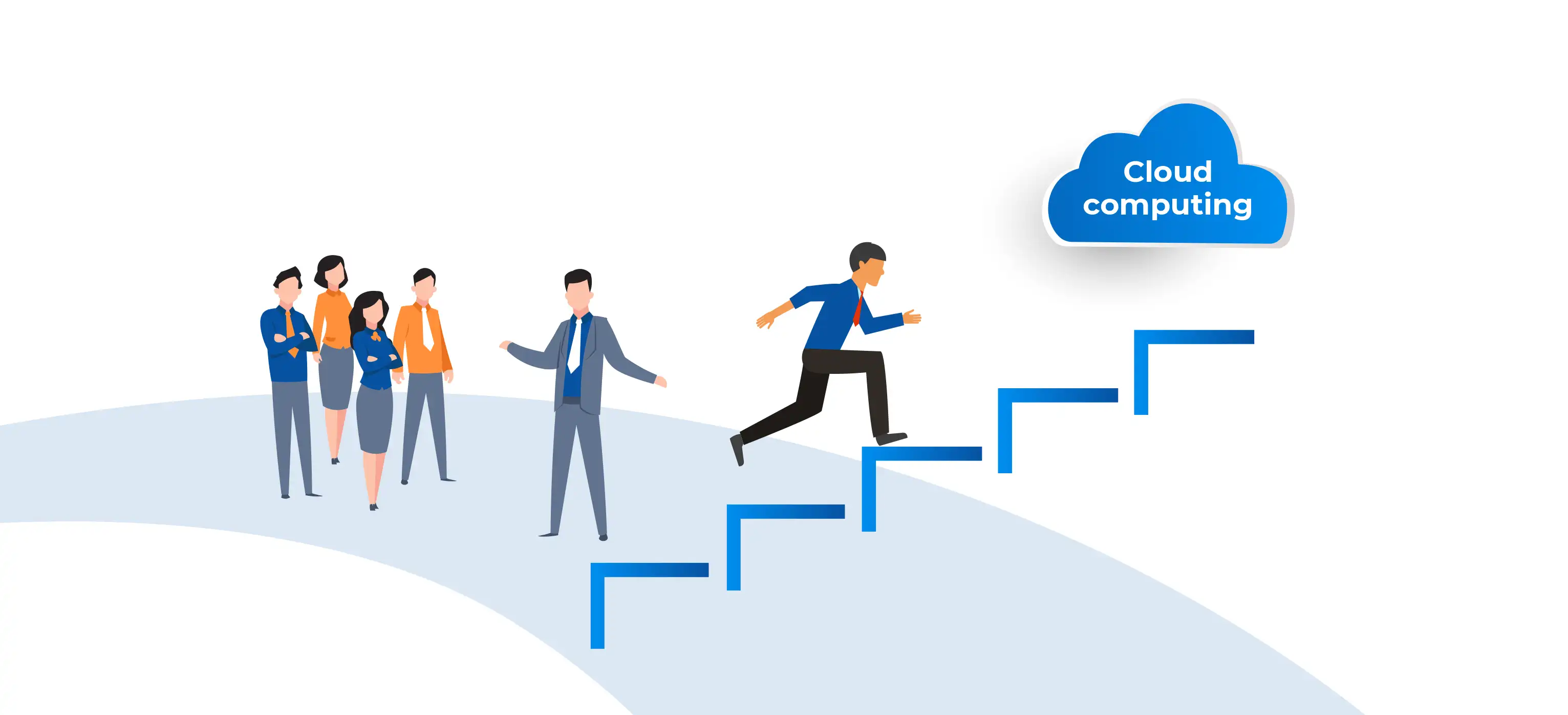
Businesses are actively embracing cloud computing, adopting cutting-edge cloud computing technology, and integrating cloud environments into their infrastructure. However, for a successful transition to cloud computing, staff must be prepared for the change and become acquainted with the cloud solution they intend to utilize. Employee cloud computing training is an important aspect of preparing a business for cloud integration.
Read Also: What is Cloud Computing and How Does It Work?
Adopting cloud computing is as much about driving innovation as it is about creating cultural transformation for many enterprises. Here are guidelines on how to prepare your IT Team for Cloud Developments;
You can't keep your employees in the dark about the latest cloud computing technologies until it's too late. Teams must be aware that their company is shifting to cloud computing and what this means for them. To educate people about why migrations occur, you must give a cloud deployment business case, which includes what cloud computing accomplishes and why it is migrating. This offers the organization time to address staff issues and inquiries regarding the cloud service they are utilizing.
Read Also: Advantages Of Cloud Computing
This is your chance to focus on flaws in your company's operations and uncover inefficiencies such as duplicate job work, underperforming assets, or the need for further training. You should be able to uncover solutions to streamline business operations and improve decision-making as a result of this examination. What do you expect from your IT, and in the cloud the best option for all workloads?
Not all apps and processes will benefit from cloud migration, possibly because they process highly sensitive data, or because performance may suffer. This is why a hybrid cloud solution, which connects on-premise and off-premise assets to take advantage of cloud benefits while securing sensitive data on a local server or other traditional infrastructure, should be considered. Remember to think holistically when determining where cloud applications and services make sense in the overall infrastructure.
Read Also: Cloud Computing Skills
According to Amazon Web Service CEO Andy Jassy, "there is no compression technique for the experience." While theoretical experimentation is beneficial for understanding the foundations, there is no alternative to hands-on experience, which can include designing and testing various cloud solutions in a closed sandbox. Employees can understand where their abilities fit and where they may contribute after receiving training.
For example, if you are looking to add AWS skills to your portfolio as your team's role has changed or mastered a specific AWS technology, AWS certification courses will help you and your organization remain up-to-date in digital evolution. Likewise, each Training course can help you get updated and stay ahead of the competition.
Read Also: Cloud Computing Job Outlook
Even if you are not running a typical data center, you must have infrastructure-focused units. The Cloud Infrastructure team brings together infrastructure, operations, governance, any residual data center operations, architects, security, storage, networking, and help desk teams to construct an ecosystem that aids in the development and maintenance of the virtualized platform.
The ultimate goal is to efficiently and cost-effectively build, install, operate, and adjust cloud infrastructure. The cloud infrastructure team distributes cloud infrastructure to the cloud service team, whether you use on-premise virtualization or a combination of cloud providers.
Read Also: Tips for Passing AWS Certifications Exams
You'll need to create an organized cloud adoption learning plan or curriculum, for your team to follow in order for them to widen their abilities and realize how their contribution fits into the bigger picture. This cloud adoption program could comprise the following components:
Encourage experimentation by allowing your teams to implement old projects in novel ways. Experimentation leads to innovation! Participate in industry events to inspire your teams to get out there and observe what others are doing in the sector, as well as to create an industry network.
Read Also: Top Cloud Gaming Jobs
Company digitization will fail if enterprise decision-makers do not recognize the urgency and relevance of digital transformation. Company leaders must be highly attentive to digital technology and developing business models in order to compete in the digital age, and they must continually reflect on or alter corporate strategy. Digital change requires leadership and responsibility, which means that it must be supported and empowered at the highest levels.
Digital transformation requires enterprises to not only quickly learn and master new technologies, but also to integrate new technologies into a combination of advantages, and to find the right combination points in business transformation so that they can be applied and changed in existing businesses. Enterprises face significant difficulty in harnessing new technology as a result of digital transformation.
A cloud computing certification course training is the finest option to train an individual to work in cloud computing. These lectures can be tailored to a specific cloud solution or might serve as an overview of how cloud computing works. When an individual completes the course, it signifies that they are prepared to work with the most recent cloud computing technologies. Most cloud providers offer their own solution certifications, however, certain third-party cloud certifications are available.
Read Also: Top Cloud Computing Certifications
Transitioning to a cloud-first IT strategy necessitates a significant paradigm shift for your whole IT workforce. What you may not have anticipated is how your new cloud team's roles may differ from previous obligations, or how far-reaching the culture change may be.
Read Also: Types of Cloud Computing Service
